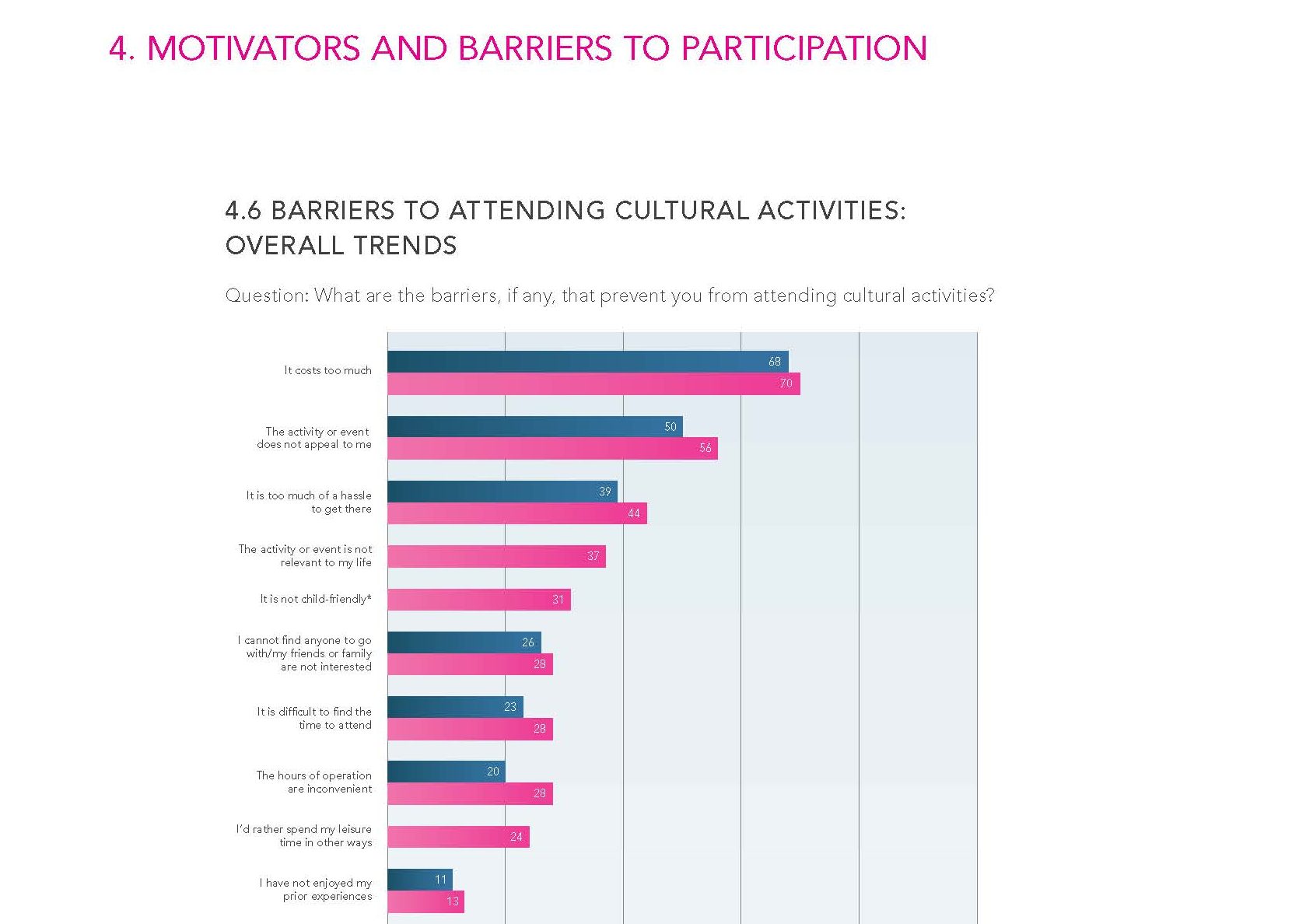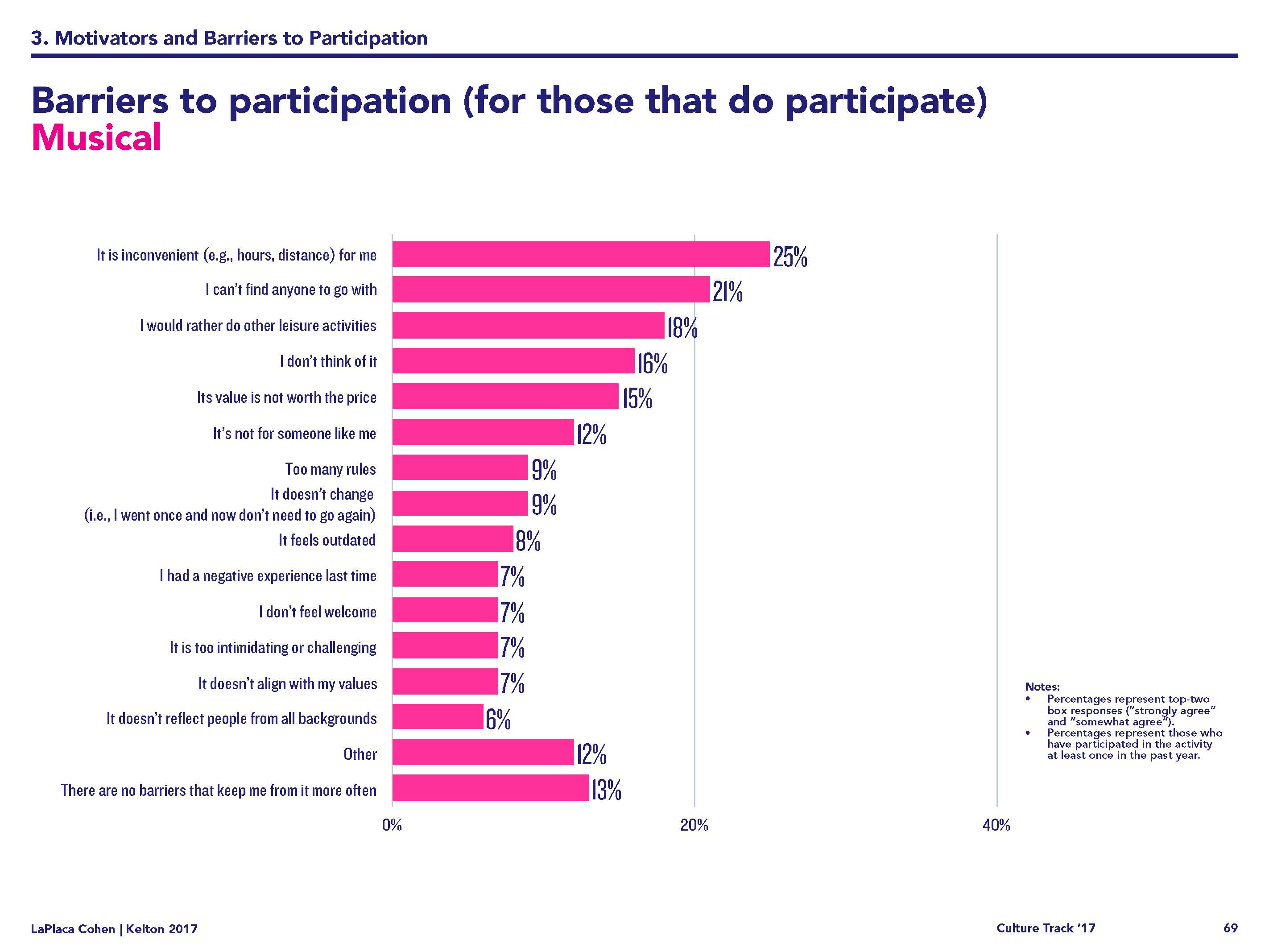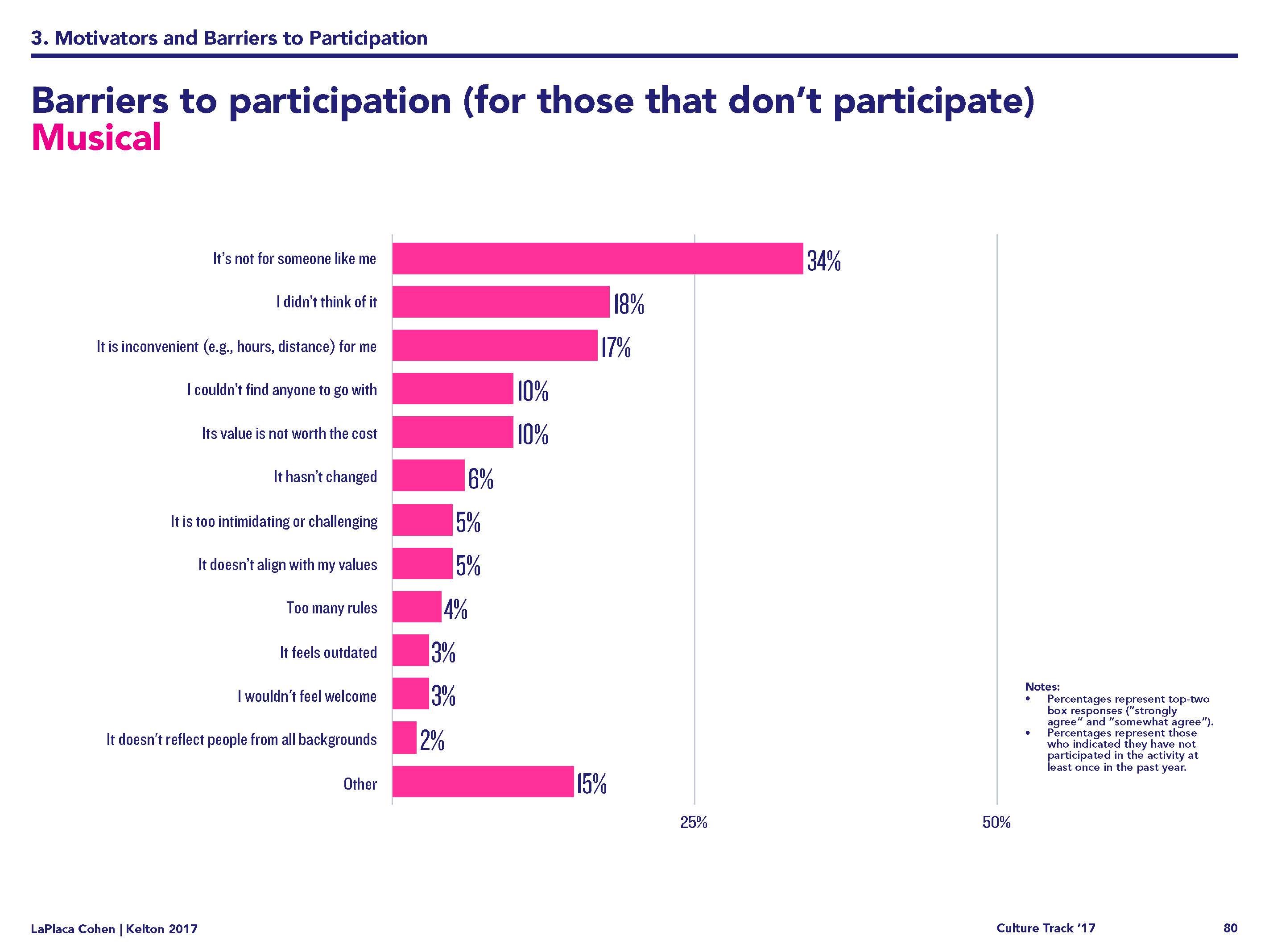Back in October I wrote a couple posts about the newest iteration of the Culture Track report. The operative word there is iteration. The study is conducted every three years in an attempt to track the shifting trends in perception and participation in cultural activities by the general population.
In my excitement to talk about the findings, I didn’t really take the time to examine the “shift” element that is intended to make this data so valuable. While preparing to do a presentation on the current findings, it occurred to me to take a look at the past finding as a point of comparison so I downloaded the 2014 data.
Even in a superficial scan of the 2014 materials, this next graph jumped out at me.
The legibility is a little tough at full size so I cropped it down to the top 10 responses about barriers to participation. The blue bar is the 2011 responses and the mauve is the 2014 responses. A mauve only bar indicates they only started asking the question in 2014.

Now look at a representative sample of the top responses for the 2017 survey. One caveat – as best I can tell, the 2011 and 2014 didn’t break out these results by discipline as they did in 2017. Nor did they break it out by barriers for attendees and barriers for non-attendees. That may skew the results in some manner.


In the 2017 responses, regardless of discipline, among those that participate. The number one barrier was “inconvenience.” For the majority, number two and three were “didn’t think of it” and “rather spend time in other ways,” respectively
Among those that didn’t participate, every number one barrier, again regardless of discipline, was “Its not for someone like me.” For the majority, number two and three were “inconvenient” and “didn’t think of it.”
For nearly every discipline, with both participants and non-participants, “It’s Value Is Not Worth the Cost” is number five. (Except for zoo participants where it is fourth and dance participants where it is sixth.)
This significant change in placement really left me wondering what happened in the last three years.
Is cost no longer as big as factor? Does separating out the responses by discipline and participation level provide a truer picture of what presents a barrier to people? Did the researchers ask the questions in a different way that lead to different responses?
This last issue might have been an influence. In 2011 and 2014 they asked if the economy had impacted respondents’ cultural participation and how that manifested. These questions, which seem to have been absent from the 2017 survey, may have primed people to think about costs and their ability to pay.
There was also a question on 2011 and 2014 asking how cultural organizations could make it easier to participate. Lower cost of admission was number one. This question also doesn’t seem to have been included in 2017.
The lack of questions in 2017 suggesting economic factors were a problem and part of a solution may have diminished frequency with which people agreed or strongly agreed that cost was a factor as a barrier. From the information I have been able to find about how each survey was created and conducted, I can’t say if any of these things could have been an influence.
Cost isn’t the only category that make a significant shift. Look at where “I’d rather spend my leisure time in other ways” falls. In 2017 it is usually third or fourth but it was ninth in 2014. I can’t think anything so compelling that has emerged in the last 3 years that has caused people to shift it up in their priorities.
I would like to think that we can attribute these differences to the fact that the researchers are getting a lot better about the way they ask these questions and parse the data.